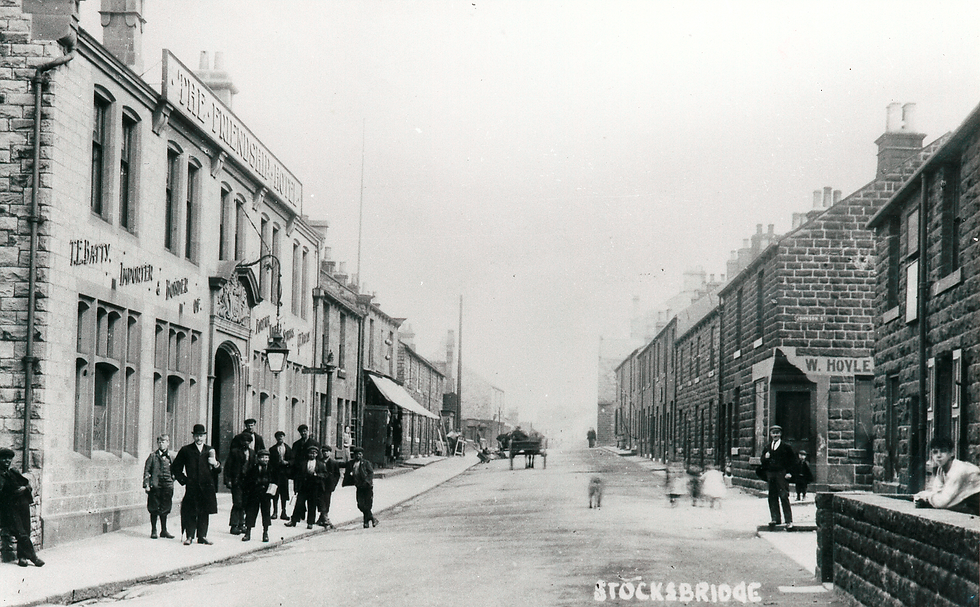Brenda's Story
Brenda Bramall born 1934

The row of houses where Brenda was born, opposite the Friendship Hotel
BRENDA'S STORY
I was recently asked if I could share this rather wonderful memoir on my website. It was written by Brenda Hawkin nee Bramall, who was born in February 1934. She writes wonderfully about her memories of growing up in Stocksbridge and of her relations the Bramall, Adams and Fisher families. The Second World War, being taken to the Fever Hospital by horse-drawn ambulance, rationing ... it is a fascinating read. Click on the .pdf button below to read the booklet.

Brenda is descended from the Bramall family at Midhope, the village blacksmiths. Her father was Reggie Bramall, born in 1903 at Button Row, and her mother was Lucy Hannah Fisher. Reggie's parents were Charles Henry Bramall and Elizabeth Adams. Elizabeth was one of the daughters of Frederick Adams, who was employed by the Water Works, and his wife Caroline.
Brenda's great-great grandfather was William Bramall, born c1795. William's father John (born 1759) was the village blacksmith, but William did not take up the trade. That was taken up by two of his brothers John (who was older) and David (younger). The Smithy had been in the Bramall family for generations, and there is a date of 1778 and the initials GB etched on its north-east corner. Writing in 1916, local historian Joseph Kenworthy called it an “ancient building.”
Kenworthy told an amusing tale about these two brothers John and David who worked the smithy together for many years without, it is said, any unkind word or any desire to take advantage of each other or anyone else. He wrote:
It is said they went to work in tall hats, “donning” paper-caps and leather aprons on their arrival at the smithy, and that they always went to Penistone market together, and came away together; their visits to the village ale-house being after the same manner. It was noticed that they had one pot between them, from which they drank alternately, and the story goes that, on one occasion, David was observed to take a deeper draught than usual at the first “sup,” which was painfully apparent when John took up the pot. He, however, made no fuss about the matter, but quietly remarked “I think tha wur rather dry David, wurn’t ta?” and the answer came just as quietly “Aye John I wur dry.”
Kenworthy added that:
Those were the days of hard drinking and practical joking, and “Mischief Neet” was more than duly observed by farm hands and pit-lads. The bellows were taken out of Midhope Smithy on one such lawless night, and placed amidst the branches of a lofty tree in Hill House Lane, and at another time John and David Bramall were astounded to find on arrival at the smithy that a new plough, which had been brought to them to be “ironed” a few days before, had been taken out of the shop and stuck in the chimney, and as the two brothers did their best to get it out again and down the roof, in safely, they were heard to say, “It’ll be them young uns aat o’Yewden, my! aren’t they strong?” [1]
Joseph Kenworthy, The Early History of Stocksbridge & District Handbook 18a, Old Registers and Old Scholars, published by the author, 1916. pp36-37

This photograph of Midhope Smithy was printed in Kenworthy's Handbook 18a

Midhope Smithy in 1974 (source unknown)

A pen and ink drawing of Midhope Smithy by local artist and teacher Bill Dearnley (thanks to Judy Nichols for sharing this)
